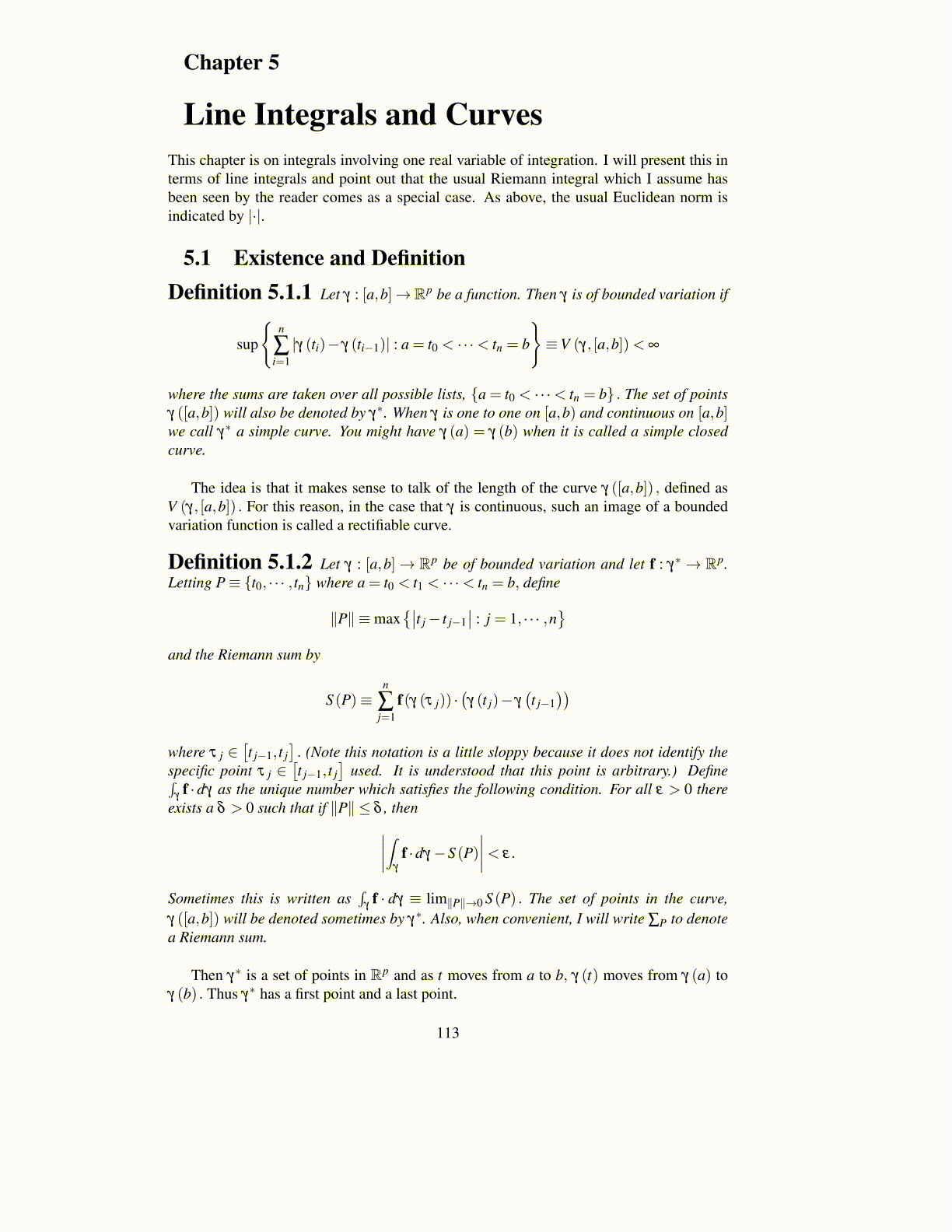
Chapter 5
Line Integrals and CurvesThis chapter is on integrals involving one real variable of integration. I will present this interms of line integrals and point out that the usual Riemann integral which I assume hasbeen seen by the reader comes as a special case. As above, the usual Euclidean norm isindicated by |·|.
5.1 Existence and DefinitionDefinition 5.1.1 Let γ : [a,b]→Rp be a function. Then γ is of bounded variation if
sup
{n
∑i=1|γ (ti)− γ (ti−1)| : a = t0 < · · ·< tn = b
}≡V (γ, [a,b])< ∞
where the sums are taken over all possible lists, {a = t0 < · · ·< tn = b} . The set of pointsγ ([a,b]) will also be denoted by γ∗. When γ is one to one on [a,b) and continuous on [a,b]we call γ∗ a simple curve. You might have γ (a) = γ (b) when it is called a simple closedcurve.
The idea is that it makes sense to talk of the length of the curve γ ([a,b]) , defined asV (γ, [a,b]) . For this reason, in the case that γ is continuous, such an image of a boundedvariation function is called a rectifiable curve.
Definition 5.1.2 Let γ : [a,b]→ Rp be of bounded variation and let f : γ∗ → Rp.Letting P≡ {t0, · · · , tn} where a = t0 < t1 < · · ·< tn = b, define
∥P∥ ≡max{∣∣t j− t j−1
∣∣ : j = 1, · · · ,n}
and the Riemann sum by
S (P)≡n
∑j=1
f(γ (τ j)) ·(γ (t j)− γ
(t j−1
))where τ j ∈
[t j−1, t j
]. (Note this notation is a little sloppy because it does not identify the
specific point τ j ∈[t j−1, t j
]used. It is understood that this point is arbitrary.) Define∫
γf · dγ as the unique number which satisfies the following condition. For all ε > 0 there
exists a δ > 0 such that if ∥P∥ ≤ δ , then∣∣∣∣∫γ
f ·dγ−S (P)∣∣∣∣< ε.
Sometimes this is written as∫
γf · dγ ≡ lim∥P∥→0 S (P) . The set of points in the curve,
γ ([a,b]) will be denoted sometimes by γ∗. Also, when convenient, I will write ∑P to denotea Riemann sum.
Then γ∗ is a set of points in Rp and as t moves from a to b, γ (t) moves from γ (a) toγ (b) . Thus γ∗ has a first point and a last point.
113